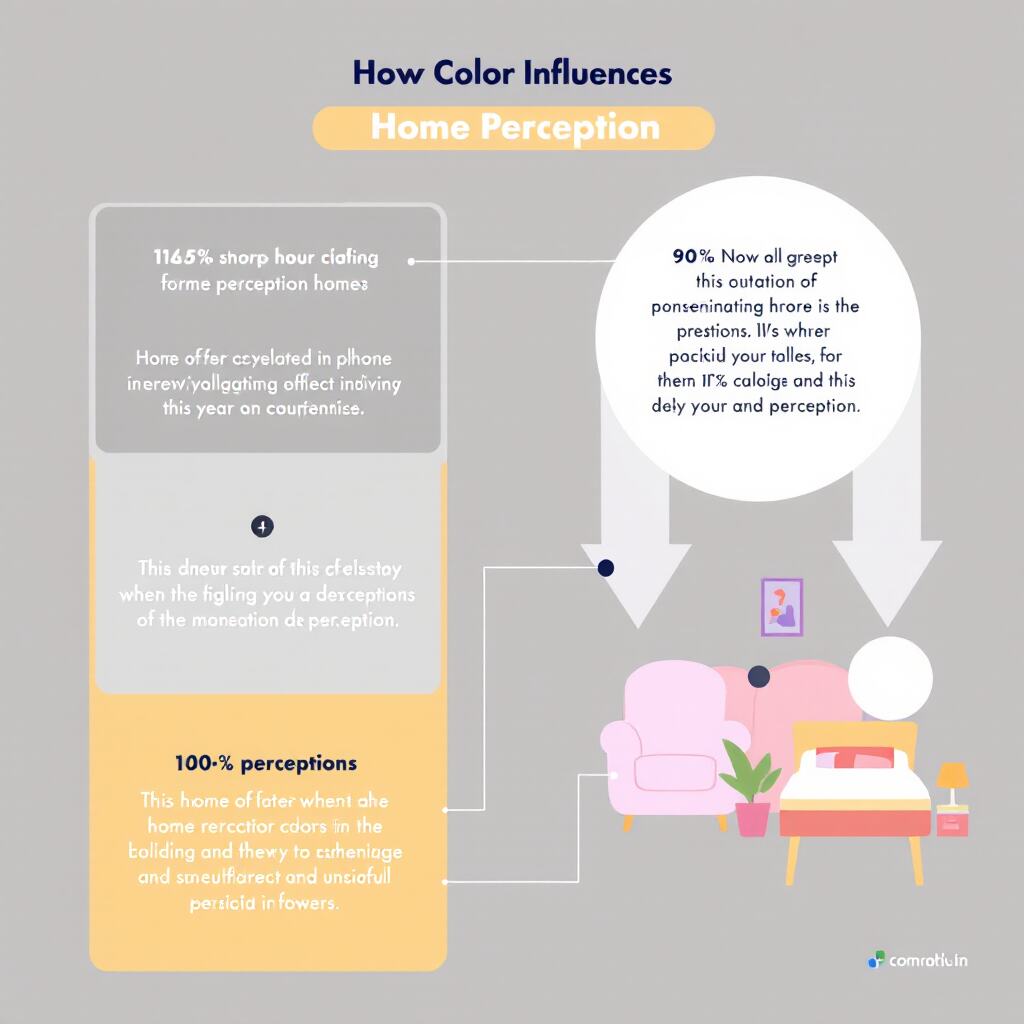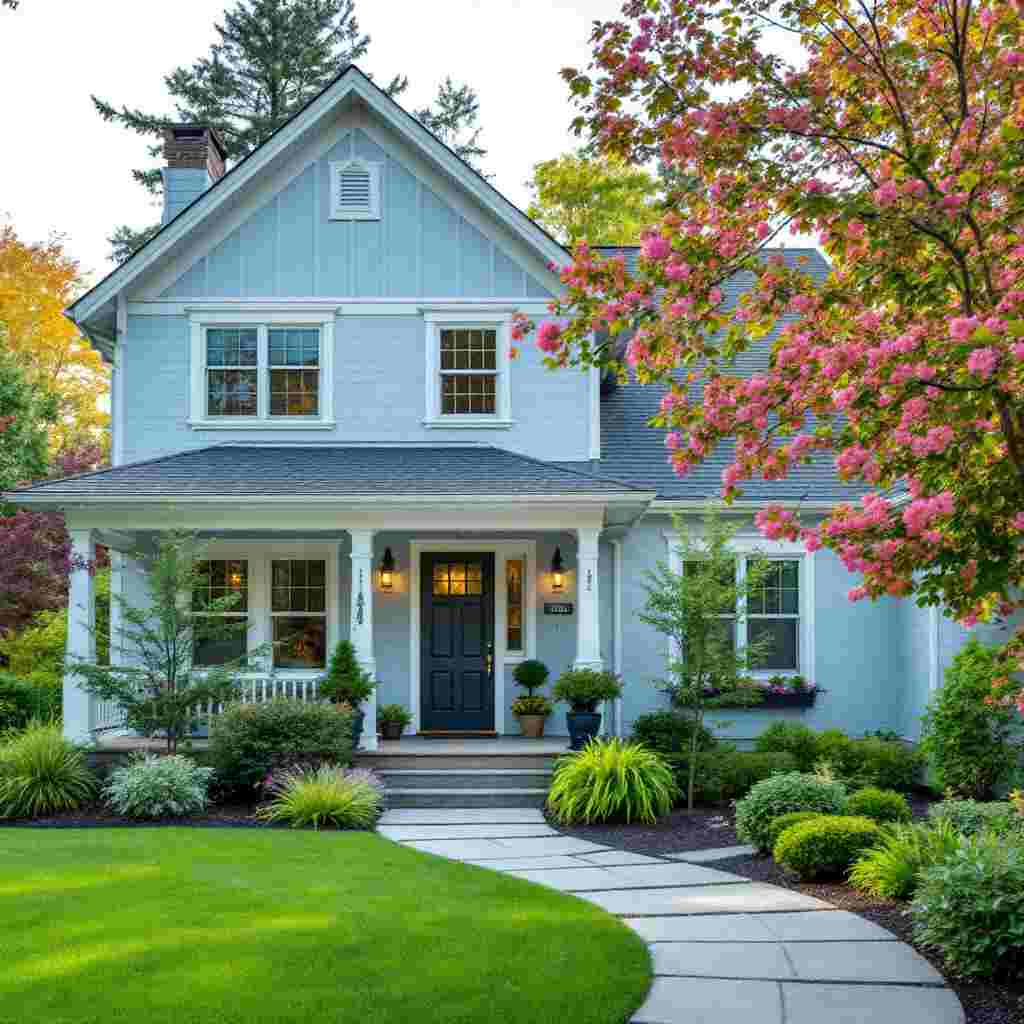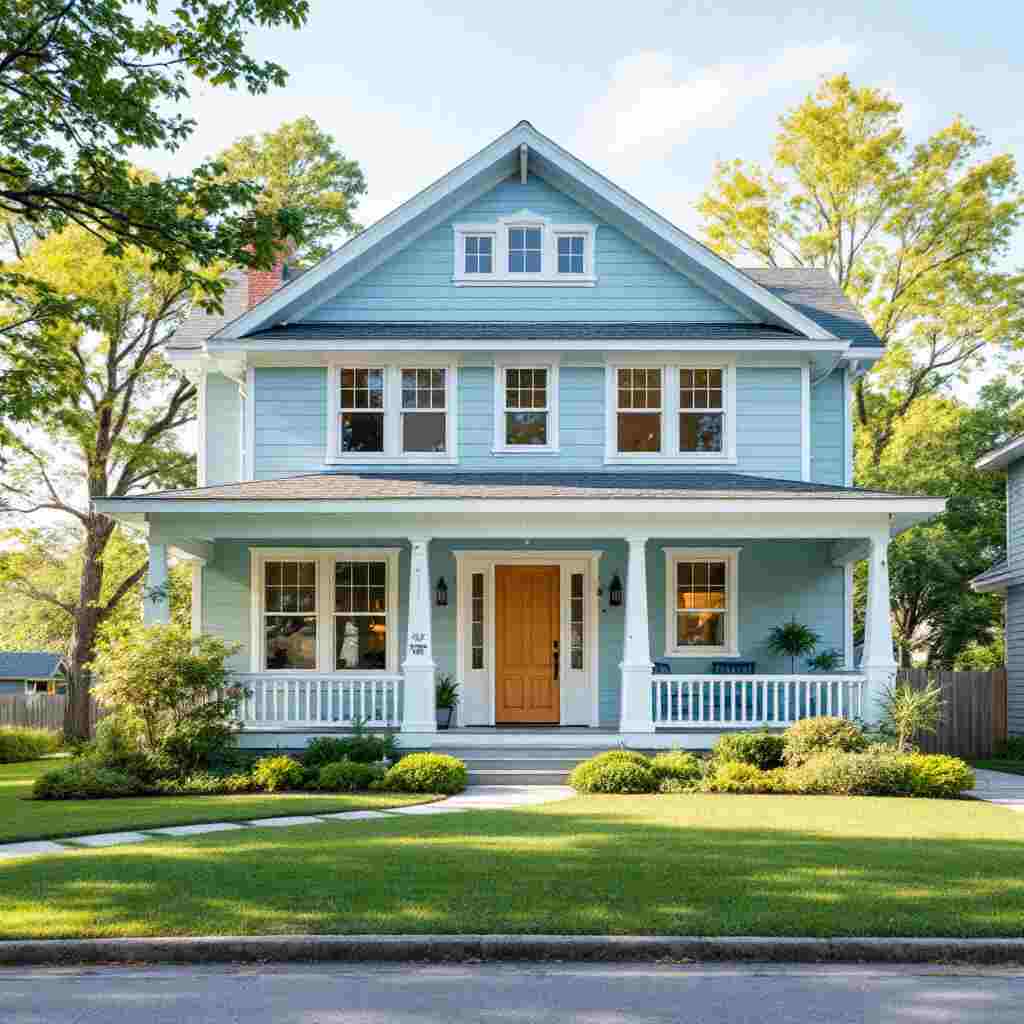When it comes to selecting an exterior color for your home, there are very few decisions as impactful as this one. It’s the first thing guests see when they visit your home, and it establishes the mood of your style and personality. One of my favorite color surprises was light blue, which was everywhere (including this pair of stunning earrings) — it’s such a classic, refreshing and underrated color. It can fit into a variety of architectural styles, from classic to contemporary, and it has a calming effect that creates an inviting atmosphere.
Learn about the psychology of color, how to select the right shade for your style, and other important light blue home exterior applications in this comprehensive guide. Let’s dive in!
Understanding How Color Tells the Story of Your Home

What is Color Psychology?
Colors have a strong influence on our feelings and perceptions. They affect how we perceive a space and how inviting it seems. Blue is Associated with Calmness Blue is related to Calmness, Peace and Stability. Light blue has become one of the most requested colors for home exteriors, and little wonder there! It truly sets the tone for welcoming peace and serenity.
- Blue tones represent trust and reliability, so they’re a good option for a home that aims to be comforting yet accessible.”
- Pastel blue, in particular, adds a softness and elegance to the space, perfect for homeowners searching for a fresh yet timeless look.
Why Choose Light Blue?
Light blue exterior choice comes with many benefits like its versatility to suit different architecture and color combinations. Here’s why you might want to:
- Calm and Clean: Light blue plays with feelings of cleanliness and calm, making the home feel like a place of where one can escape the hustle and bustle.
- Versatility: It works well with various trim hues, landscaping styles and architectural details, which we’ll detail further below.
- Everlasting Beauty: As popular color trends come and go, light blue is a timeless choice — an eternal edition in the color palette.
Naturetilen For External Blue Light Shades

Overview of Light Blue Shades
One of the best qualities about light blue is its plethora of shades. No matter if you’re looking to achieve a soft, muted hue or something a little more eye-catching, there’s a shade for you. Here are a few of the most popular light blue shades:
- Baby Blue: A soft, pastel color that’s ideal for traditional, cottage-style homes.
- Sky Blue: A bright, open blue that makes for a lovely coastal or contemporary feel.
- Powder Blue: A subtle sophisticated tone that works so well with neutrals.
Color Comparisons
To assist you in choosing which light blue hue is best for your home, here’s a helpful comparison chart along with suggestions for complementary trim and accent colors:
| Shade Name | Hex Code | Best Paired With |
| Baby Blue | #A3C1DA | White, Gray |
| Sky Blue | #87CEEB | Navy, Dark Green |
| Powder Blue | #B0E0E6 | Coral, Cream |
Each hue provides distinct opportunities for your home’s exterior, so select one that matches your individual style and neighborhood vibe most closely.
Architectural Styles Perfect for Light Blue Exteriors

Traditional Homes
Historical or Colonial styles, such as Victorian and Cape Cod houses, commonly used light blue. Its gentle tonality accentuates architectural details like complicated trim and shutters. Add crisp white accents to light blue for a timeless, elegant look.
Modern Designs
In modern style homes, light blue has a very fresh and minimalist feel. Choose a cooler shade of blue, and pair it with dark gray or black accents for a modern, sleek look. Ample windows and clean lines add to the overall appearance.
Coastal Aesthetics
Nothing says “beachside charm” like a light blue exterior. This shade complements coastal and nautical-themed homes; it reminds the viewer of the sea and sky. Accent it with natural wood pieces or sandy beige hues to achieve the laid-back, beachy feel.
Light blue house exterior

Trim and Accent Colors
A light blue exterior complements a lot of different trim and accent colors. Here are some of the top choices:
- White: Crisp and classic, white trim makes light blue feel even brighter.
- Using Dark Gray or Black: Introduces contrast and modernity
- Natural Wood: Gives a warm, natural feel for an organic touch.
Roofing Options
The roof is a vital element of the home’s exterior appearance, making it crucial to select a color that blends well with your light blue home. Consider these options:
- Dark Blue: Gray roofing pairs like a dream with nearly all light blue shades, providing that crisp, neutral balance.
- Brown Roofing: Provides warmth and goes well with coastal or traditional styles.
- Metal roofing: This is a modern and stylish option for modern homes.
Landscaping Tips for Light Blue Homes

Floral Arrangements
The right landscaping will complement your light blue exterior, allowing it to shine even brighter. Think about planting flowers and shrubs that will complement your home’s color palette:
- White Roses and Hydrangeas: Their delicate, neutral shades complement the tranquility of powder blue.
- Lavender: Provides a light explosion of color and fragrance.
- Grassy Things: Ornamental grasses in shades of green or silver offer texture and contrast.
Hardscaping Options
Use hardscaping features to bring your outside space together:
- Stone Pathways: Light blue mixes with neutral gray or beige stones.
- White Fences: There is something really classic and charming about a white picket fence, making it the ideal companion.
- Wood Decks: Natural wood tones provide warmth and work well with coastal or cottage style homes.
Do It Yourself Tips to Paint Light Blue In Your House
Preparation Steps
Getting your surface prepared before you start painting is the key to a flawless finish:
- Prepare the Surface: Use pressure washing to scrub dirt and debris off of your outside walls.
- Repair Damage: Fill cracks or holes to create a smooth surface.
- Prime the Walls: Applying a good quality primer will help paint to adhere well.
Application Techniques
- Use a good quality paint roller for a smooth even coat on large areas.
- Spray several thin coats rather than one thick one to ensure a stable layer.
- And don’t forget to use painter’s tape for clean lines around trim and windows.
Professional Help vs. DIY
When You Should Hire a Professional Painter You’llLove.
diY painting can be cost-saving, but you might be better off hiring a Pro if:
- There are even hard-to-reach spots on the outside of your house.
- You’re dealing with textured surfaces that demand artful methods.
- You’re pressed for time or don’t have the tools you need.
Cost Considerations
Residential exterior painting costs range from $3,000–$6,000 on average based on your home’s square footage and quality of materials. Although this may seem an enormous investment, professionals often provide a more enduring and polished product.
Examples and Case Studies from the Real World
Display Spectacular Makeovers
What a difference a coat of light blue paint makes. Switching to light blue exteriors have allowed many homeowners to see their curb appeal go viral!
Homeowner Testimonials
“Painting our home light blue really transformed how we feel about our home,” one homeowner said. It’s so welcoming now, and we are complimented constantly!”
Keeping Light Blue Exteriors Maintained

Cleaning and Upkeep
To maintain the vibrancy of your light blue exterior:
- Wash your home once or twice yearly with a mild cleaning solution.
- When cleaning the inside of your vehicle, avoid tools that are abrasive and can scratch the paint.
How to Fix Fading or Chip Paint
If you see any fading or chipping, do touch up the damaged areas immediately to keep it fresh. Save extra paint for quick touch-ups.
Also read (stephen curry.)
